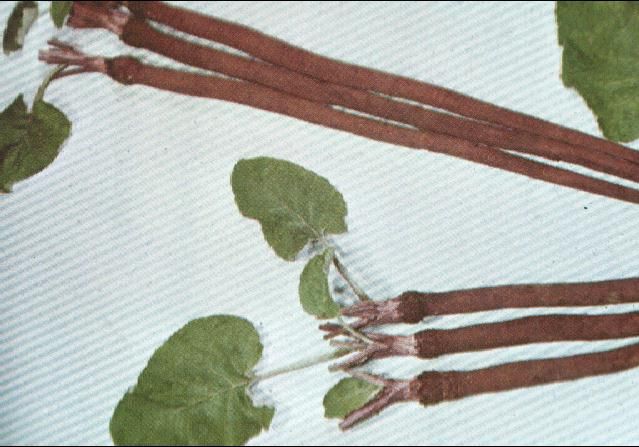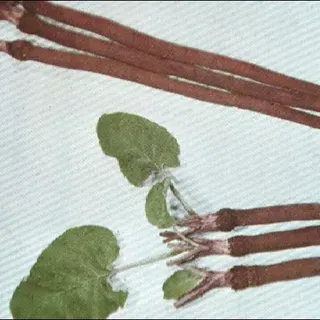Burdock—Arctium lappa L.1
Edible burdock is a member of the Compositae family. Some of the other common names by which burdock is known are gobo (Japanese name), ngau pong (Chinese name), harlock, edible goberon, bourholm, eddick, flapper-bags, sticky buttons, beggar's buttons, clot, clod, cockly, and hurr-burrs. Also, the plant's burrs are called cuckolds, cuckles, cuckold's buttons, and cuckoldy busses.
There are two botanical species of burdock, A. lappa and A. minus. The one found growing wild throughout much of the United States is A. minus and is only slightly comparable to the cultivated A. lappa. Gobo (burdock) is a choice chinese vegetable.
Although burdock grows wild and thrives throughout the United States, it is not native. It was introduced by the early settlers and was quickly adopted by the American Indians for their own gardens. These coarse perennial plants are weeds in many temperate areas. The tops die down in the winter. New sprouts arising from roots in spring are peeled and eaten raw or cooked. The dried roots from the first year's growth and the seed are used medicinally.
Description
Cultivated gobo looks very much like the wild plant. It may grow to 8 feet under ideal conditions. The numerous purple flowers are small and comparatively inconspicuous. They quickly turn into burrs if allowed to go to seed. The roots can grow as long as 4 feet and are slender and shaped like carrot and parsnip. Most of the time they grow about 24 inches long and are brown with white flesh.

Credit: James M. Stephens
Culture
Burdock will grow in most soils, but it prefers a well drained soil rich in humus. The seeds germinate readily and should be sown in rows 18 inches apart in late fall or early spring (or all winter in South Florida). Thin the seedlings to stand 6 inches apart in the row. Soaking seeds in warm water overnight before planting seems to help germination. Prepare the soil deeply (down to 24 inches) to accommodate the long roots. Use the same fertilizer as for the other vegetables in the garden.
Harvesting
Keeping the flowers picked off prevents formation of burrs, which are not useful. The leaves and young shoots are gathered in the spring. Also, the young shoots with tiny roots attached may be pulled and cooked together like baby beets and beet greens. The mature roots are ready for harvest about 2½ months after planting. To harvest these mature roots, dig deeply with spade or fork until a gentle tug frees the loosened roots.
Use
While the young leaves and stems are edible when prepared like spinach and asparagus, the most desired part of the plant is the long, slender root. When very young, the roots can be gathered, peeled, and eaten raw like radishes (add a little salt). The mature root should be peeled, scalded, and then cooked any way desired.
The flavor of burdock varies with conditions, but is similar to the taste of Jerusalem artichokes, scorzonera, or parsnips. It is sweetly pungent and agreeable. The texture is crisp when raw. Wild American burdock is very bitter and must be cooked in a manner to remove the bitterness.



